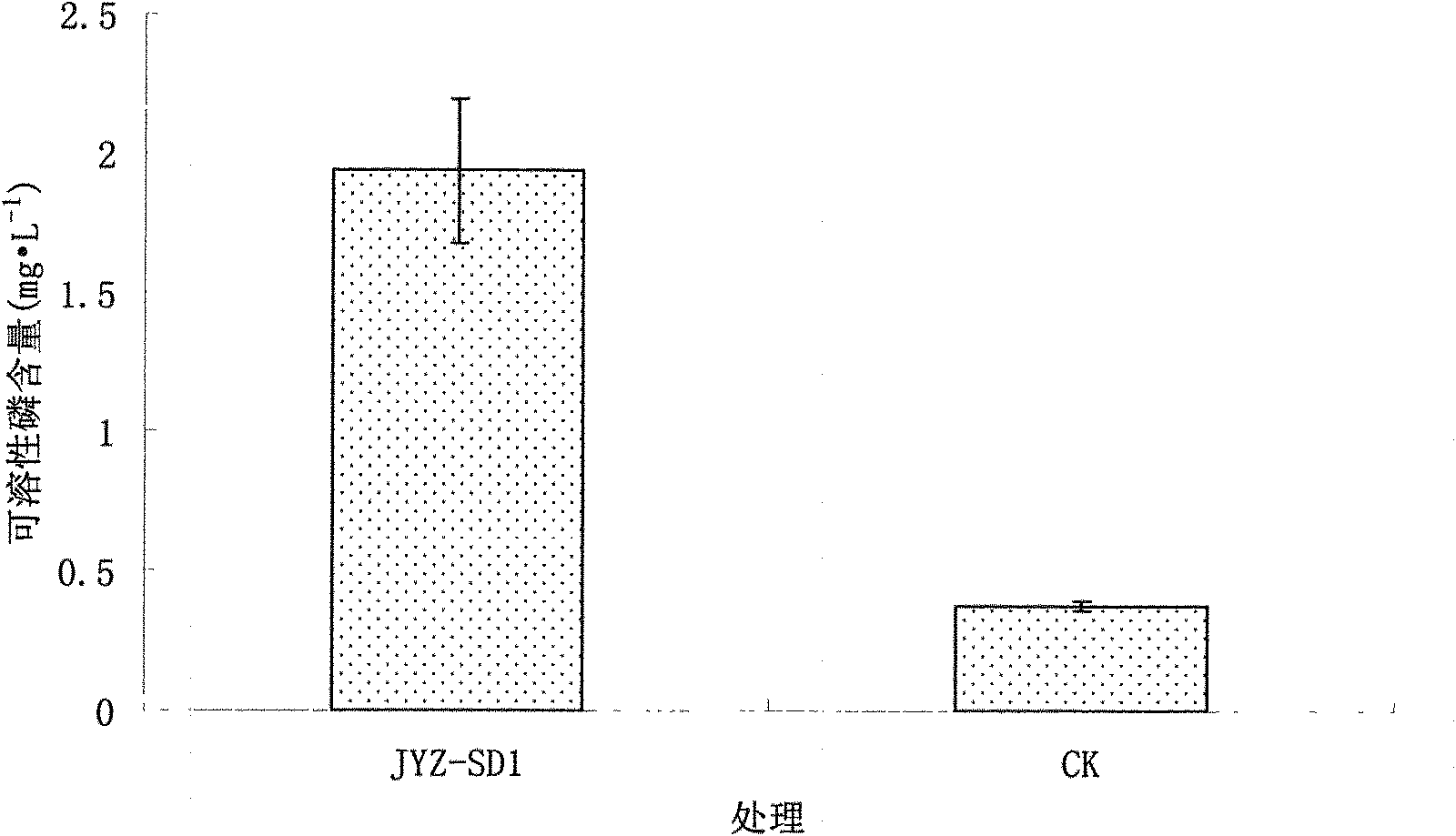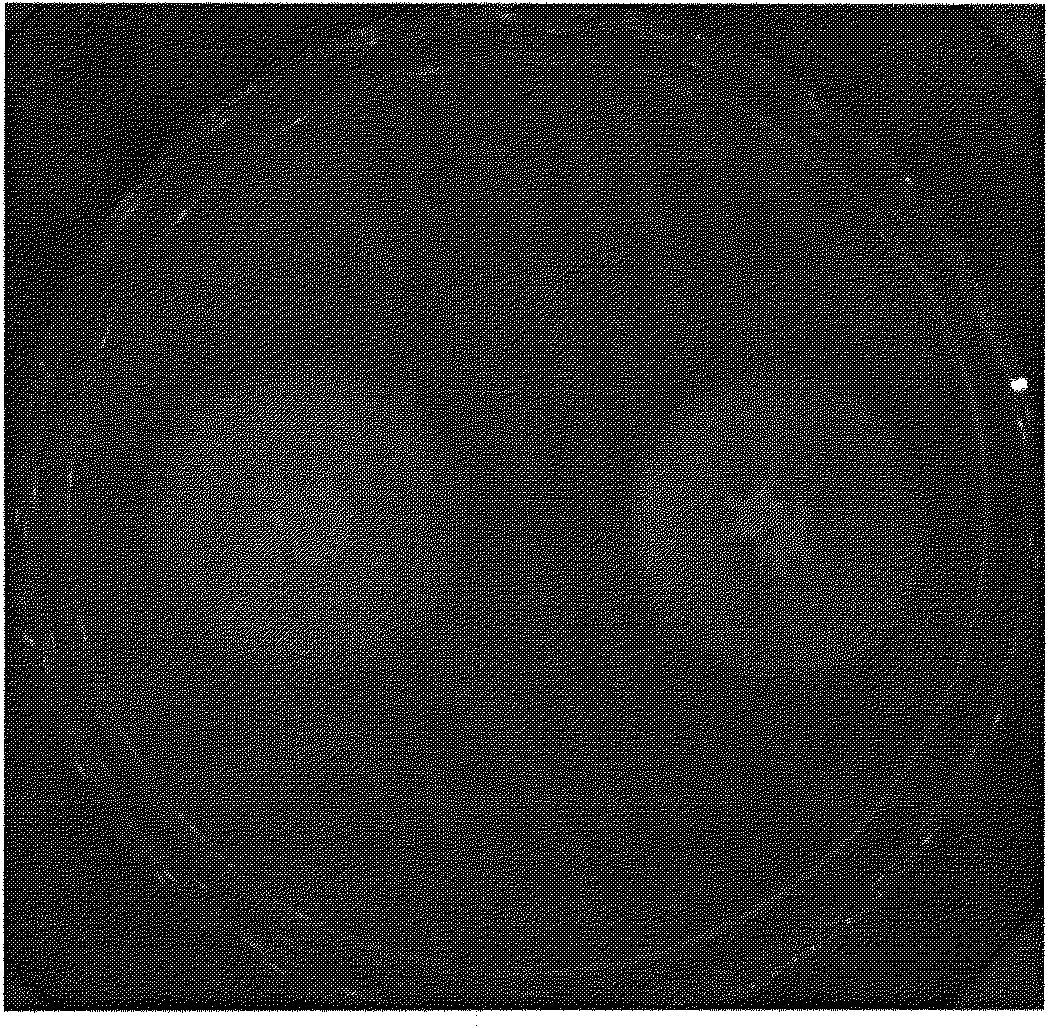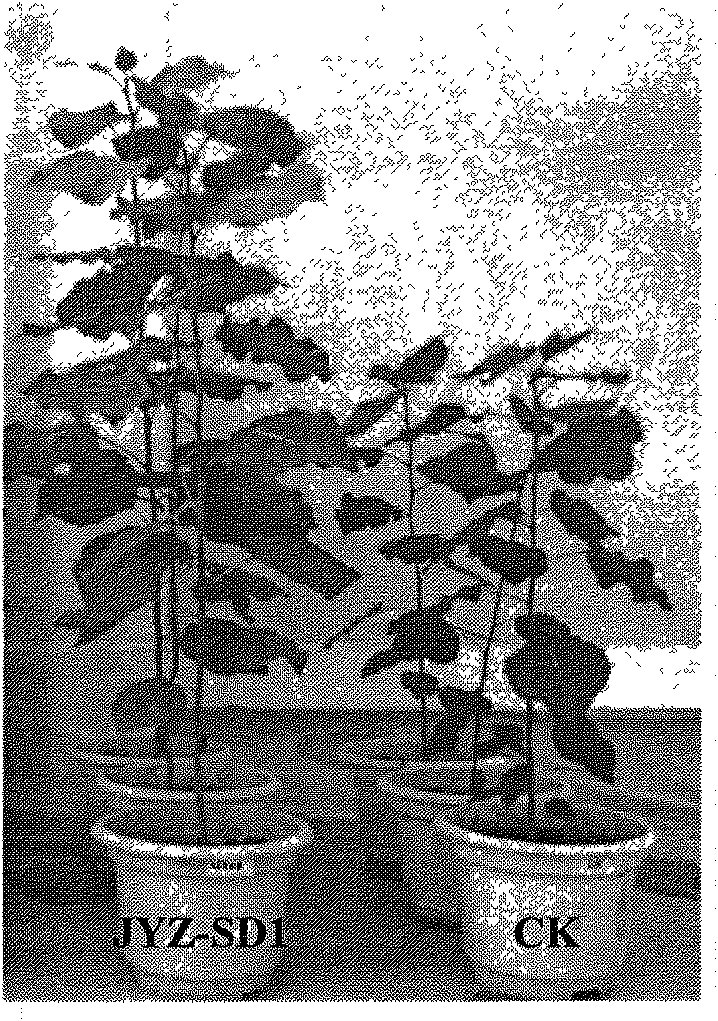Bacillus cereus and application thereof in promoting growth of poplars
A technology of Bacillus cereus and poplar, which is applied in the field of microbial fertilizer and biological fertilizer, can solve the problems of screening and application of organic phosphorus-resolving bacteria that have not been seen in poplar trees, and achieve excellent strain resources, good degradation effect, and promote growth and development. Effect
- Summary
- Abstract
- Description
- Claims
- Application Information
AI Technical Summary
Problems solved by technology
Method used
Image
Examples
Embodiment 1
[0021] Example 1: Determination of Phosphorus Solubilizing Ability of Bacterial Strain JYZ-SD1 Plate
[0022] Egg yolk medium: 3.0g beef extract, 10.0g peptone, 5.0g sodium chloride, 1000mL distilled water, 15.0-18.0g agar, pH 7.0, sterilized, when the temperature drops to about 50℃, add 3-4mL to every 50mL Fresh egg yolk liquid (egg yolk mixed with sterile saline in equal volumes), mix well, pour plate.
[0023] The JYZ-SD1 strain activated twice was spotted on the egg yolk plate with a sterilized toothpick, and after culturing at 30°C for 3 days, the diameter of the phosphorus-dissolving circle and the colony were measured, and the ratio of the phosphorus-dissolving circle to the diameter of the colony was calculated (Figure 2).
[0024] It can be seen from Figure 2 that after the JYZ-SD1 strain was cultured on the egg yolk plate, it could produce an obviously opaque phosphorus-dissolving circle. After measurement and calculation, the diameter of the phosphorus-dissolving c...
Embodiment 2
[0025] Embodiment 2: Determination of the liquid phosphorus solubilizing ability of bacterial strain JYZ-SD1
[0026] Montina solution organic phosphorus medium: glucose 10.0g, ammonium sulfate 0.5g, sodium chloride 0.3g, potassium chloride 0.3g, magnesium sulfate heptahydrate 0.3g, ferrous sulfate heptahydrate 0.03g, manganese sulfate tetrahydrate 0.03 g, lecithin 0.2g, calcium carbonate 5.0g, distilled water 1000mL, pH 7.0
[0027] Inoculate the twice activated JYZ-SD1 strain into NA medium (3.0g of beef extract, 10.0g of peptone, 5.0g of sodium chloride, 1000mL of distilled water, 15.0-18.0g of agar, pH 7.2-7.4), and culture at 30°C for 2 days , rinse the bacteria with sterile water to make a bacterial suspension, take 1mL of the bacterial suspension and put it in a 100mL Erlenmeyer flask containing 50mL of Montina medium, and take Montina medium with 1mL of sterile suspension as a control (CK ), 3 repetitions for each treatment, 30°C, 180r·min -1 After 72 hours of shakin...
Embodiment 3
[0029] Embodiment 3: the greenhouse pot experiment of bacterial strain JYZ-SD1
[0030]After activating the strain JYZ-SD1 for 2 to 3 times, use an inoculation loop to pick a small amount of bacteria and inoculate it into 100 mL of triangular medium containing 50 mL of NB medium (3g of beef extract, 10g of peptone, 5g of sodium chloride, 1000mL of distilled water, pH 7.2 to 7.4). In a bottle, 30°C, 180r·min -1 Shake culture for 72h. Fermentation broth (4°C, 6000r min -1 ) centrifuged for 5min, rinsed the bacteria with sterile normal saline for 2 to 3 times, and adjusted the bacterial suspension with sterile normal saline (7~8×10 8 cfu / mL) to make bacterial agent. NL-895 cutting seedlings and black poplar seedlings (60 days old) were inoculated respectively, and the same amount of sterile saline was used as the control, and the inoculation volume was 15 mL / plant for cutting seedlings and 5 mL / plant for seedlings. 6 replicates per treatment were placed in the greenhouse for ...
PUM
| Property | Measurement | Unit |
|---|---|---|
| Diameter | aaaaa | aaaaa |
| Diameter | aaaaa | aaaaa |
Abstract
Description
Claims
Application Information
 Login to View More
Login to View More - R&D
- Intellectual Property
- Life Sciences
- Materials
- Tech Scout
- Unparalleled Data Quality
- Higher Quality Content
- 60% Fewer Hallucinations
Browse by: Latest US Patents, China's latest patents, Technical Efficacy Thesaurus, Application Domain, Technology Topic, Popular Technical Reports.
© 2025 PatSnap. All rights reserved.Legal|Privacy policy|Modern Slavery Act Transparency Statement|Sitemap|About US| Contact US: help@patsnap.com



